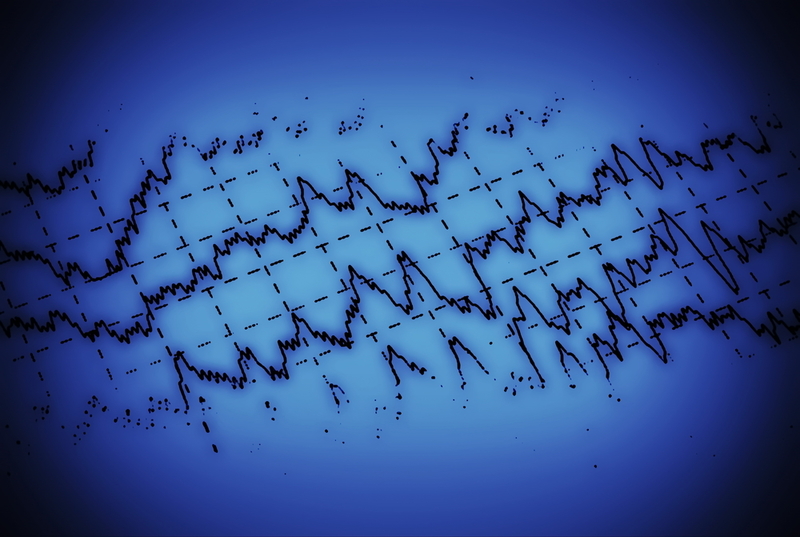Stimulating the epileptic brain breaks up neural networks to prevent seizures: JAMA
MedicalXpress Breaking News-and-Events Apr 18, 2019
- As reported in JAMA Neurology, new evidence suggests responsive neurostimulation (RNS) can remodel the brain to be less susceptible to seizures
- Using patients' brain signatures as a guide, the researchers hope to rapidly optimize the use of neurostimulation to help more people achieve seizure reduction

Responsive neurostimulation (RNS) treats epilepsy by detecting seizures and intervening with a jolt of electric current. Over time, most patients find they have fewer seizures that are farther apart. Now, for the first time, researchers at the University of Pittsburgh School of Medicine and the University of Pittsburgh Medical Center (UPMC) have a better understanding of why this happens.
"Right now, in epilepsy patients treated with responsive neurostimulation, you just have to wait and see whether their seizure frequency goes down," said Mark Richardson, MD, PhD, associate professor of neurological surgery at Pitt's School of Medicine and director of epilepsy and movement disorders surgery at UPMC. "We don't have a great way to predict who will respond. But there's so much more data recorded on these RNS devices than we currently have the ability to analyze."
In patients implanted with the RNS system, baseline brain activity is recorded for a month to characterize a person's individual seizure patterns. This information is then used to train the stimulator to automatically respond to a seizure as it's happening.
What no one has done before, Richardson said, is to analyze each individual recording of seizure activity captured by the device over time to see what is different about the brain activity of patients who experience a reduction in seizure frequency as a result of neurostimulation.
"I was expecting to find what was traditionally assumed—that the electric pulse acutely stops the seizure," said lead author Vasileios Kokkinos, PhD, a neurosurgery research instructor at Pitt. "I realized this was not what was happening. I saw some examples of acute stopping of the seizures, but that only accounted for 5% of all seizures. It couldn't explain the 60%–70% of patients who responded to treatment."
The researchers' theory is that stimulation changes brain networks—the web of linkages between neurons—so that electrical rumblings at the neural epicenter can't spread into a full-blown seizure.
"In epilepsy, brain networks get recruited to fire hyper-synchronously," Richardson said. "What we think we're doing when we stimulate is to desynchronize, over time, making it harder for the whole seizure network to come online."
To test that hypothesis, Kokkinos and other members of Richardson's Brain Modulation Laboratory compiled electrical brain activity data recorded on the RNS system in 11 patients with focal epilepsy treated at the University of Pittsburgh Comprehensive Epilepsy Center (UPCEC), an accredited level 4 epilepsy center. These patients started RNS therapy between 2015 and 2017 and were followed for up to 2 years.
Kokkinos found that people who ultimately experienced fewer seizures after starting neurostimulation treatment showed progressive reductions in spontaneous hyper-synchronous brain activity, starting as early as 2 months after the stimulator was first turned on. Richardson contrasted the faster, objective onset of these brain activity changes against the slower, subjective process of waiting to see symptom improvement in a patient's self-reported diary of seizure activity.
"This study justifies my inherent enthusiasm for the RNS's diagnostic potential beyond its proven therapeutic potential," said Anto Bagic, MD, PhD, chief of UPMC's Epilepsy Division, director of the UPCEC, and professor of neurology at Pitt's School of Medicine. He was not part of the study. "It appears increasingly likely that this exquisite way of monitoring brain activity through a therapeutic tool will enable us to assess even a response to seizure medications without prolonged waiting and suffering for patients."
Richardson hopes this kind of brain activity analysis will provide quicker feedback during the trial-and-error process of parameter adjustment, so that patients can see the long-term benefits of RNS sooner.
"Our next move is to incorporate what we've learned into a formal pipeline for analysis that might allow us in the future to predict which patients are responding before they're able to report that to us clinically," Richardson said.
-
Exclusive Write-ups & Webinars by KOLs
-
Daily Quiz by specialty
-
Paid Market Research Surveys
-
Case discussions, News & Journals' summaries